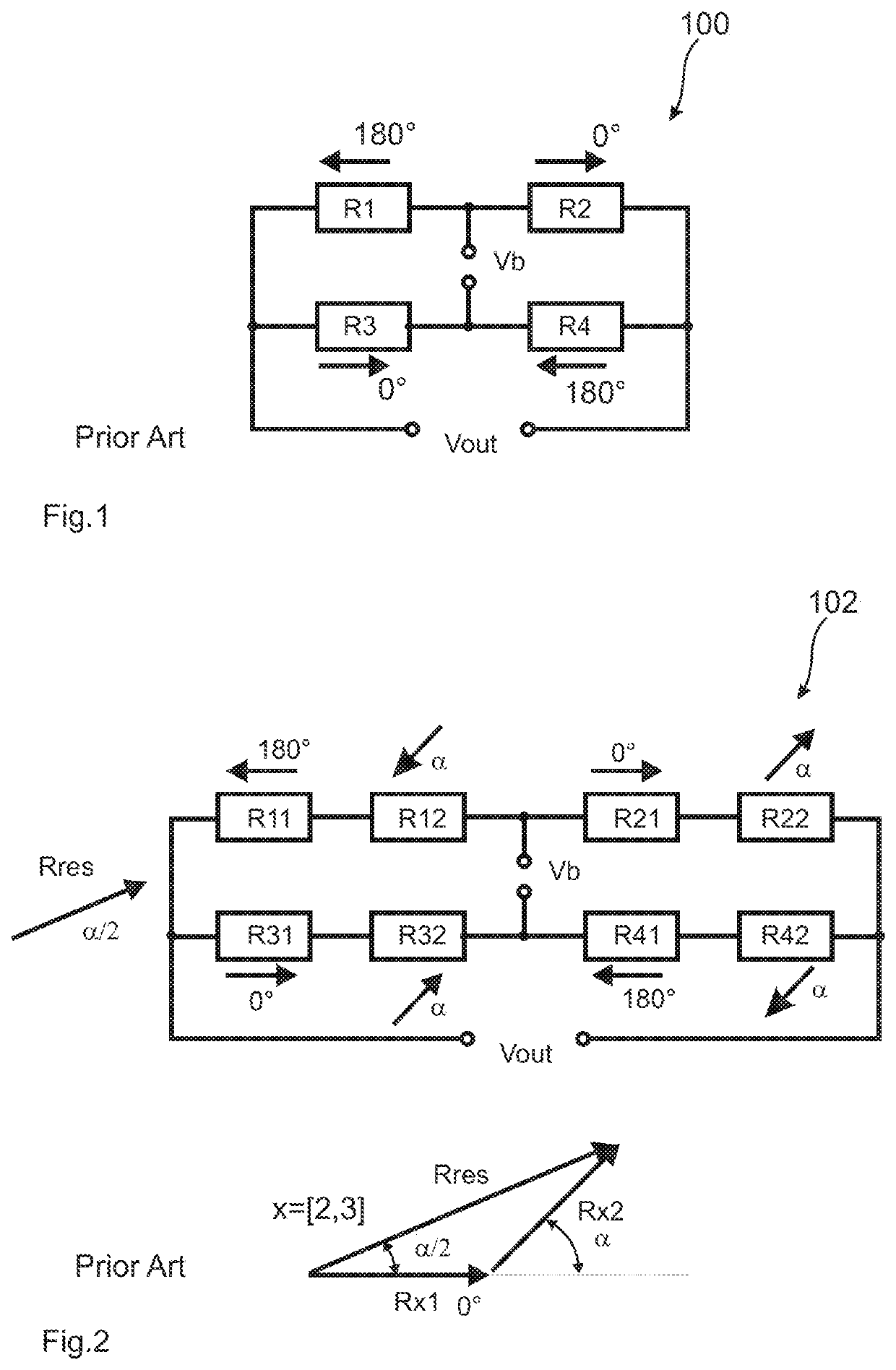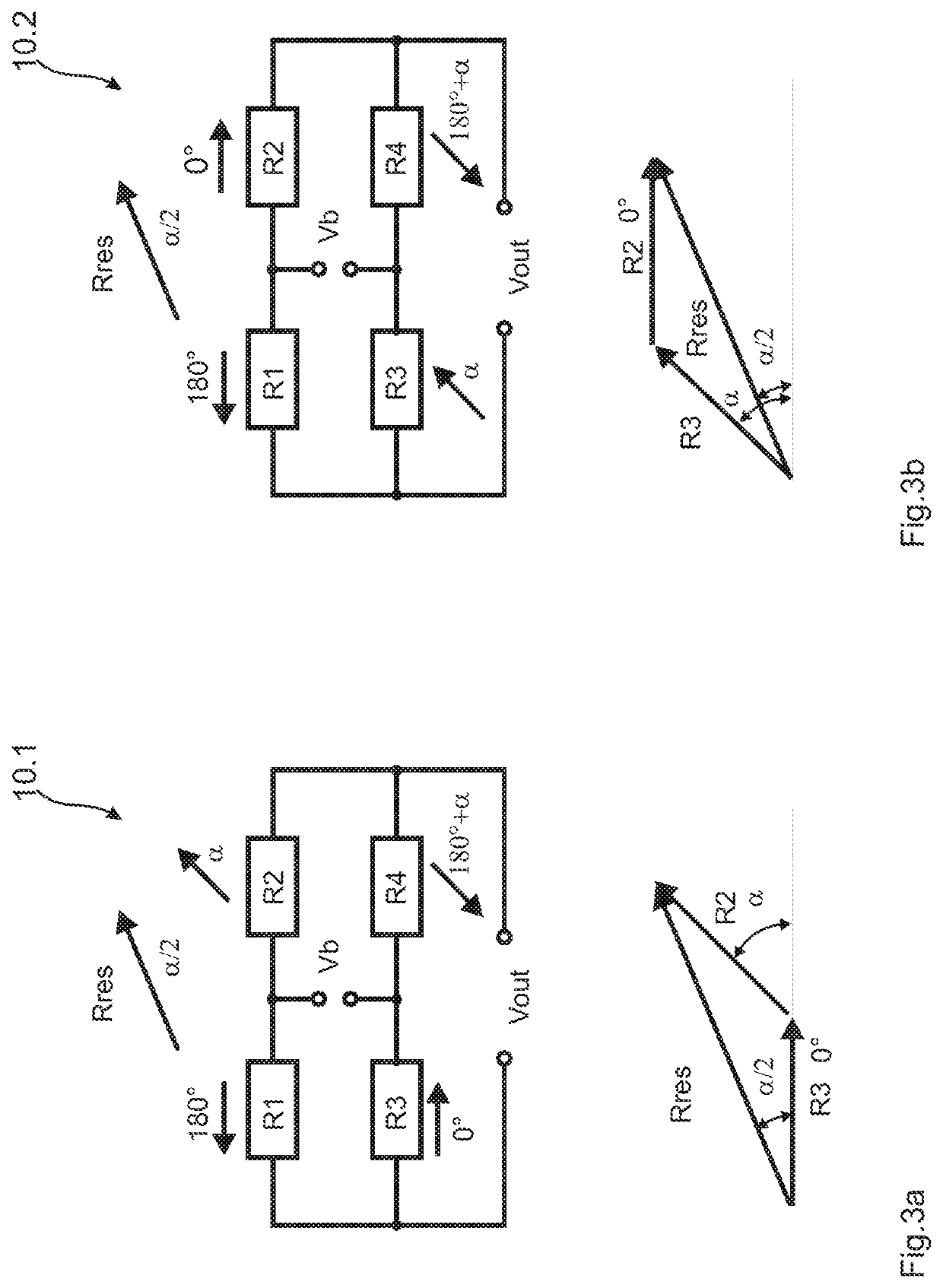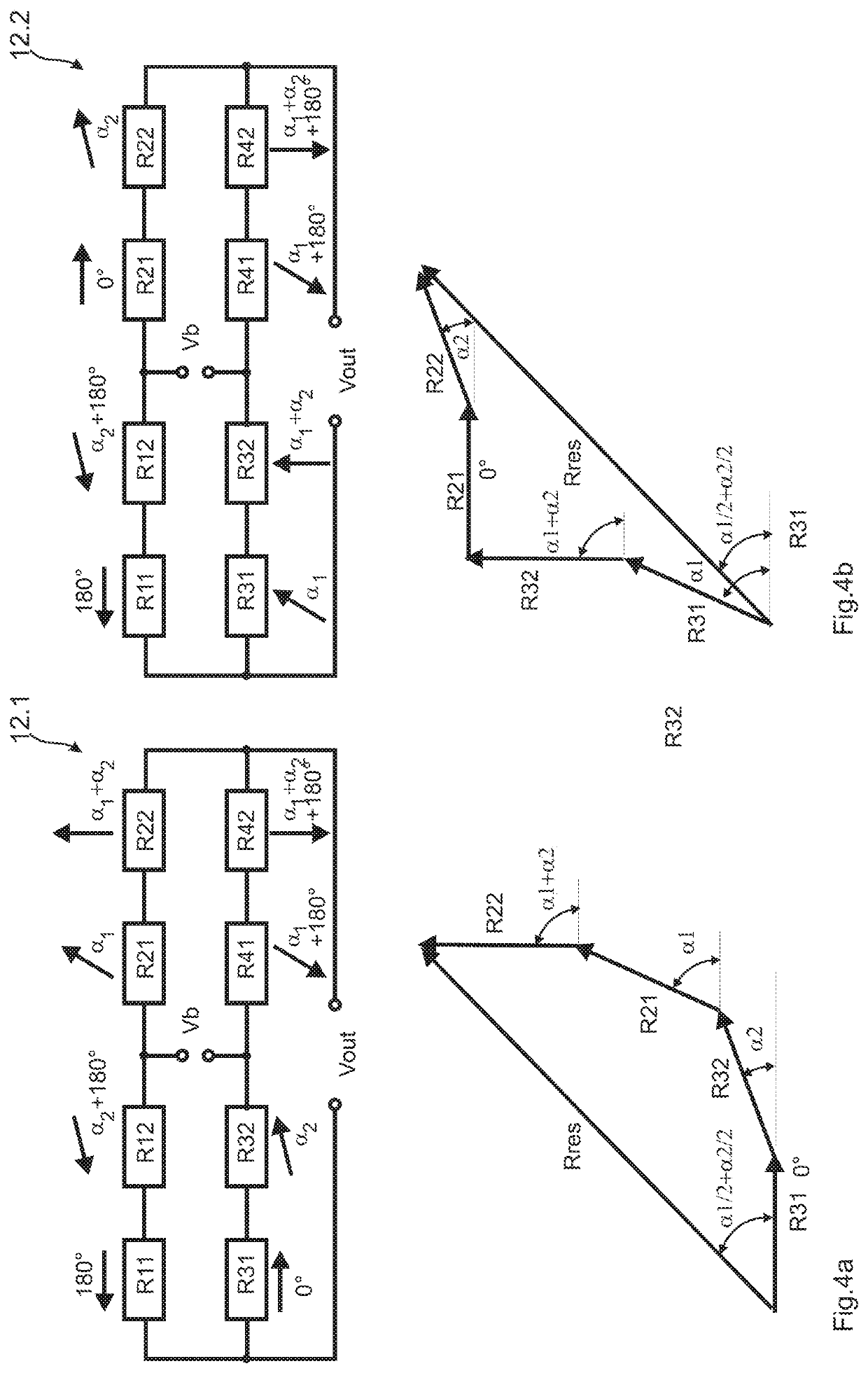Magnetoresistive wheatstone measuring bridge and angle sensor having at least two such measuring bridges
a technology of magnetic resistor and angle sensor, which is applied in the direction of magnetic measurement, measurement device, instruments, etc., can solve the problems of high manufacturing complexity, inability to achieve optimal evaluation, and inability to achieve the homogeneity of resistance behaviour in particular of tmr- or gmr-based resistor arrangements, etc., to achieve high sensor accuracy
- Summary
- Abstract
- Description
- Claims
- Application Information
AI Technical Summary
Benefits of technology
Problems solved by technology
Method used
Image
Examples
seventh embodiment
[0107]10 First embodiment of a Wheatstone bridge[0108]12 Second embodiment of a Wheatstone bridge[0109]14 Third embodiment of a Wheatstone bridge[0110]16 Fourth embodiment of a Wheatstone bridge[0111]18 Fifth embodiment of a Wheatstone bridge[0112]20 Sixth embodiment of a Wheatstone bridge[0113]22 Seventh embodiment of a Wheatstone bridge[0114]24 Eighth embodiment of a Wheatstone bridge[0115]30 Angle sensor[0116]32 Chip substrate[0117]34 Contact pad[0118]36 Conductor track[0119]38 Magnetoresistive bridge resistor[0120]40 Sine bridge[0121]42 Cosine bridge[0122]50 Trimming resistor[0123]52 Top electrode[0124]54 Tunnel resistor / tunnel element[0125]56 Bottom electrode[0126]58 Insulation layer[0127]60 Electrode interruption[0128]100 Prior art Wheatstone bridge[0129]102 Prior art Wheatstone bridge
PUM
 Login to View More
Login to View More Abstract
Description
Claims
Application Information
 Login to View More
Login to View More - R&D
- Intellectual Property
- Life Sciences
- Materials
- Tech Scout
- Unparalleled Data Quality
- Higher Quality Content
- 60% Fewer Hallucinations
Browse by: Latest US Patents, China's latest patents, Technical Efficacy Thesaurus, Application Domain, Technology Topic, Popular Technical Reports.
© 2025 PatSnap. All rights reserved.Legal|Privacy policy|Modern Slavery Act Transparency Statement|Sitemap|About US| Contact US: help@patsnap.com



